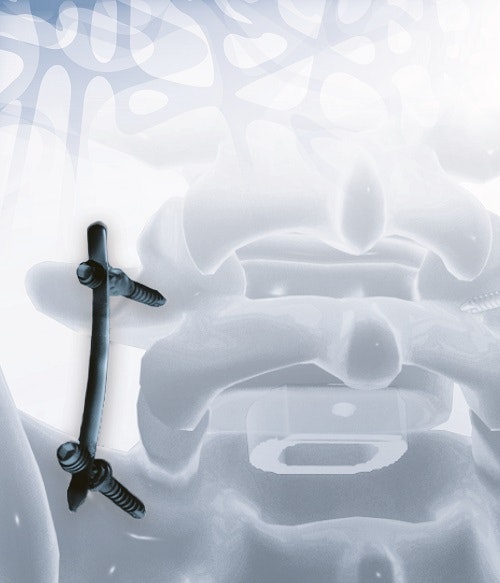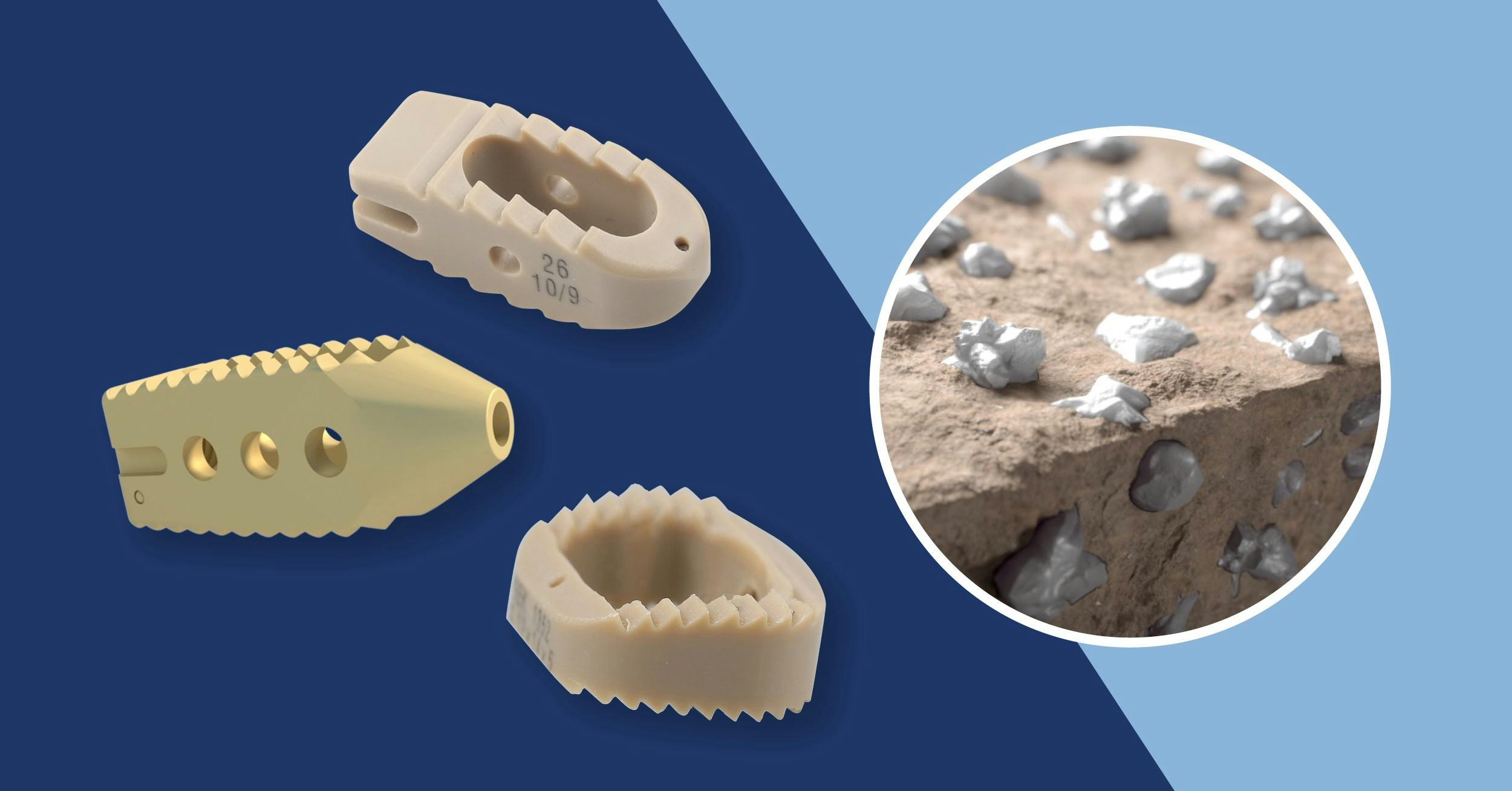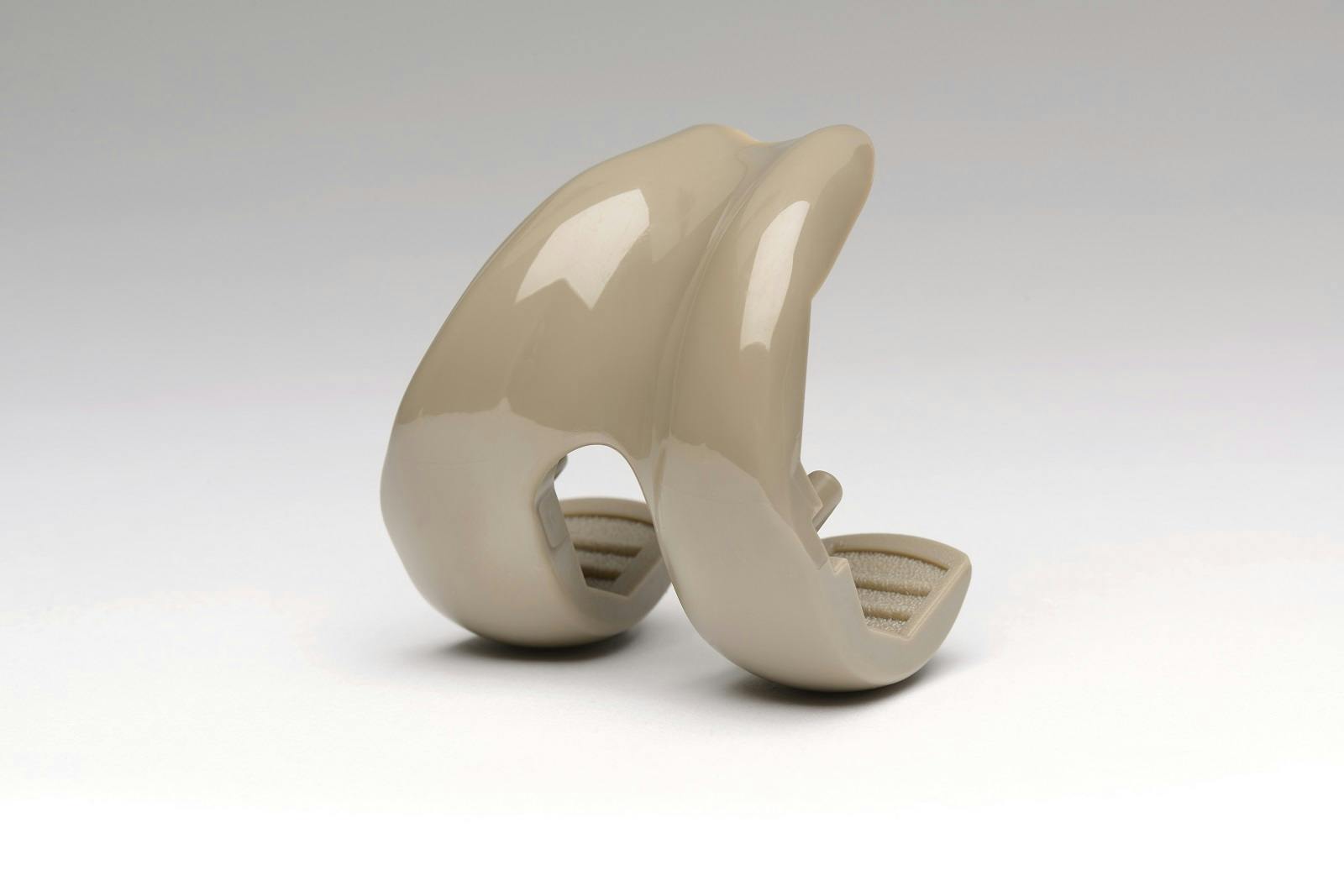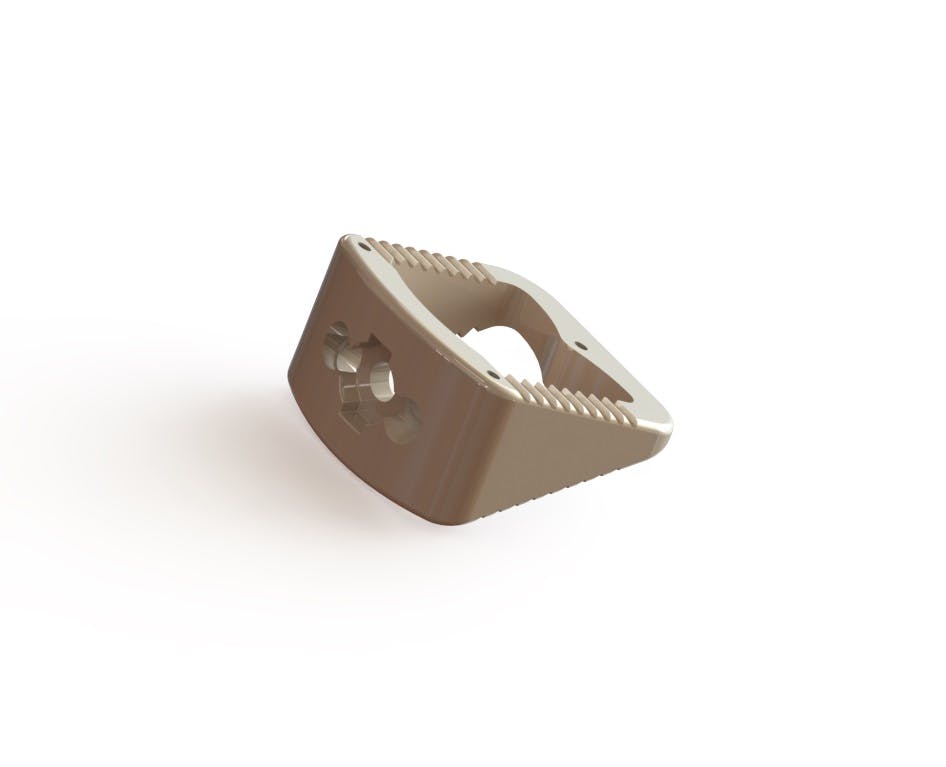
Thornton Cleveleys (UK) – Research results presented at a recent symposium at EUROSPINE 2014 in Lyon, France, reveal that PEEK-OPTIMA™ polymer-based spinal rod components are bridging the treatment gap between rigid and dynamic systems. Initial findings confirm that the rods produced by Invibio Biomaterial Solutions ("Invibio") are strong enough to treat lumbar spine instability. Summarising the studies, Dr Thierry Desjardins, a Neurosurgeon from France, stated, “Replacing metals with advanced polymers such as PEEK-OPTIMA is the way forward. This is the therapeutic wave of the future.”
The results confirmed that PEEK-OPTIMA spinal rods have much lower failure rates than titanium, with biomechanical testing, literature and the retrospective clinical results study revealing a failure rate of just 8.1% compared to 17% (1), but critically with zero rod breakages. Invibio research presented also indicated that both before and after fatigue testing, the stability of PEEK-OPTIMA rods remained almost identical (-8%), whereas it decreases significantly when titanium rods are tested (-26%). In addition, the pull out performance of pedicle screws using PEEK-OPTIMA spinal rods is increased by 20% compared to that using titanium rods.
PEEK OPTIMA rods are a major therapeutic advance
Dr. Thierry Desjardins, Neurosurgeon (Cagnes-sur-Mer, France) and Dr. Jacques Benezech (Montpellier, France) presented their preliminary findings on a retrospective clinical study led jointly with Invibio. Quality of life for patients formed a key element of the three-year findings, with impressive improvements noted by patients with PEEK-OPTIMA spinal rods revealing an ODI (Oswestry Disability Index) score of 21% and a PSI (Patient Specific Index) score of one. The audience were also keenly aware of the need for improvement in the post-operative prognosis for patients treated for degenerative spinal conditions by means of titanium rods where reoperation rates run at approximately 28% (2). ”The initial results for patients with PEEK-OPTIMA spinal rods re-operation rates were reduced significantly”, Dr Jacques Benezech explained during the symposium, which was hosted by Invibio.
In addition, Dr. Andreas Mavrogenis (Athens, Greece) presented his experience based on a clinical series of 52 patients (3). Fusion rates were also examined and concluded to be as good as titanium but with PEEK-OPTIMA spinal rods offering additional benefits by mimicking more closely the physiological loading and decreasing the occurrence of disease at sub-adjacent levels.
New treatment option addresses key challenges
The data presented was gathered over a three-year period from 89 patients treated for degenerative spinal conditions – notably degenerative disc disease, spondylolisthesis grade 1 and spinal stenosis. The comparison of the outcomes between patients with PEEK-OPTIMA spinal implants to those with traditional titanium rods highlighted how PEEK-OPTIMA polymer is directly addressing some of the key challenges facing clinical teams today. These challenges include: the stiffness inherent with all-metal constructs, contributing to clinical challenges from rod breakage and screw loosening; to accelerated degeneration at adjacent spinal segments, all of which negatively impact a patient’s outcomes.
Commenting on the results revealed to date, Gilles Larroque, Invibio European Spine Marketing Manager, said: “The objective of our retrospective clinical study is to assess the patient’s quality of life, rod breakage, reoperation rate and adjacent disc degeneration. Clearly, the results of the interim analysis, which includes 89 patients, have been very encouraging in demonstrating the advantage of PEEK-OPTIMA spinal rods versus their titanium counterparts. We are looking forward to continuing investing in the study and sharing the final results both with our device partner customers and medical professionals as soon as possible."
(1) Schnake KJ, Schaeren S, Jeanneret B: Dynamic stabilization in addition to decompression for lumbar spinal stenosis with degenerative spondylolisthesis. Spine 31:442–449, 2006
(2) Brook M et al. Reoperation Rates Following Lumbar Spine Surgery and the Influence of Spinal Fusion Procedures. Spine 32:382-387, 2007
(3) Mavrogenis A. et al: Posterior spinal fusion using pedicle screws. Orthopedics 36(7):e951–e957, July 2013
Invibio™, a Victrex plc company, has grown significantly since pioneering PEEK
biomaterial in 1999, evolving from a materials supplier to an industry-leading provider of biomaterial solutions. During that time the company has worked with world class research institutions, to develop and commercialize six implantable PEEK grades. Today, Invibio’s PEEK-OPTIMA™ polymers are used in more than four million implanted devices worldwide.
Contacts
Invibio Biomaterial Solutions
Andrew Roberts, Invibio Marketing Communications Manager
Phone +44 1253 898058, Mobile +44 7876 884895
Victrex media contact
Beate Sauer, PR & Marketing Communications Manager
Group media or Investor Relations enquiries
Andrew Hanson, Head of Investor Relations & Communications




